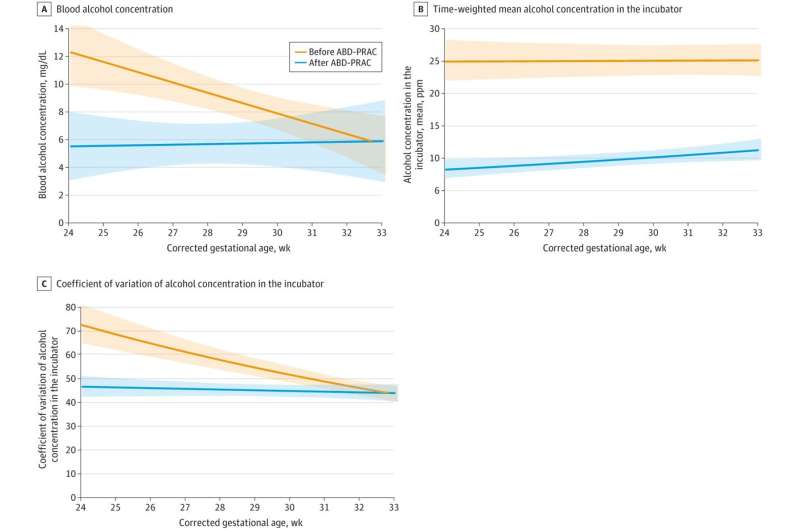This article has been reviewed according to Science X's editorial process and policies. Editors have highlighted the following attributes while ensuring the content's credibility:
fact-checked
peer-reviewed publication
trusted source
proofread
A simple method to reduce alcohol absorbed from alcohol-based disinfectants used on incubators

Neonatal incubators are considered the first home of infants born prematurely, keeping them warm and protecting them from possible infections. To further protect them from infectious pathogens, alcohol-based disinfectants are frequently used. However, new research from the University of Tsukuba has found an association between the concentration of evaporated alcohol from alcohol-based disinfectants in incubators and the amount of alcohol in premature infants.
The use of alcohol-based disinfectants (ABDs) in products, such as alcohol hand sanitizers and alcohol prep pads, is the best defense against infection which must be avoided when caring for premature babies in neonatal intensive care units (NICUs).
"One problem is that confined areas exposed to noxious compounds, such as alcohol, can have harmful effects on the infants," explains Clinical Assistant Professor Satoshi Fujiyama, senior author of the study. But to date, no studies had investigated the level of alcohol exposure in infants in incubators.
To determine the amount of alcohol that evaporates from alcohol-based disinfectants that are systematically absorbed by premature infants, the researchers measured the blood alcohol concentration in premature infants and in the air of neonatal incubators.
The researchers also introduced a new alcohol-based disinfectant practice (ABD-PRAC) that reduced the evaporation of alcohol from ABDs inside the incubators without affecting infection control and determined its association with decreasing alcohol exposure in premature infants less than 34 weeks old. The changes in alcohol concentration in the infants' blood and in the air of the incubators were then measured.
Results showed that alcohol was continuously detected in the blood samples taken from the infants, and its concentration was primarily associated with the evaporated alcohol from the ABDs in the incubators. The key factors affecting alcohol absorption in premature infants included their airways and immature skin. Hence, it was concluded that decreasing the alcohol concentration inside the incubators through ABD-PRAC is a simple way of reducing the amount of evaporated alcohol.
"Our study showed that reducing the exposure of infants to evaporated alcohol can be an easy task," says Professor Hidetoshi Takada, senior author.
This research has identified the risks to premature infants posed by certain measures, which were intended to keep them safe. It has also shown how easily these risks can be reduced by a change in practice within the neonatal infant care units. Adoption of these simple practices in NICUs will reduce the risks to premature babies associated with their care in hospital, ensuring that the optimal disinfectant used is based on its efficacy and safety.
The study is published in the journal JAMA Network Open.
More information: Daisuke Hitaka et al, Assessment of Alcohol Exposure From Alcohol-Based Disinfectants Among Premature Infants in Neonatal Incubators in Japan, JAMA Network Open (2023). DOI: 10.1001/jamanetworkopen.2023.0691




















